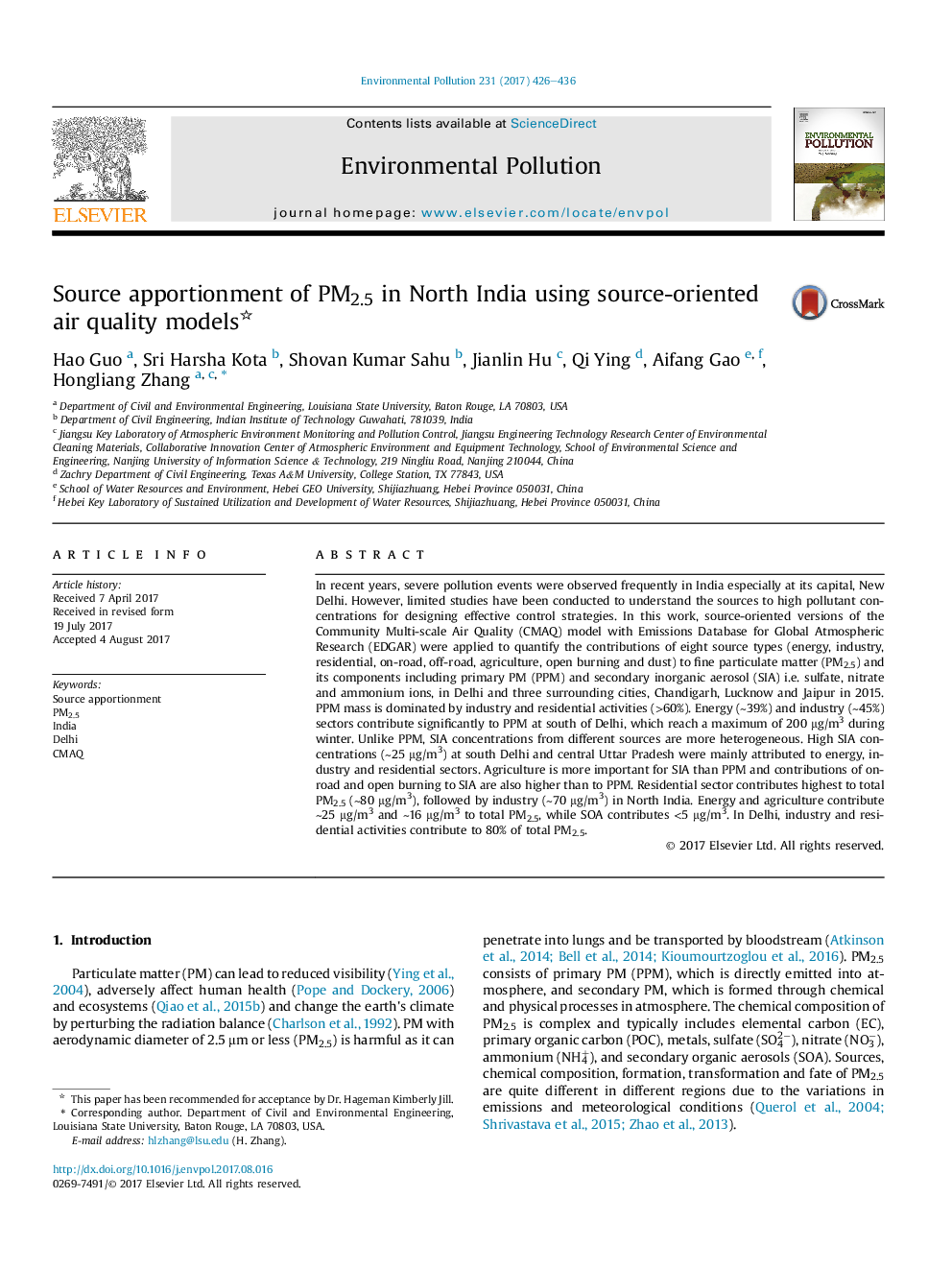| کد مقاله | کد نشریه | سال انتشار | مقاله انگلیسی | نسخه تمام متن |
|---|---|---|---|---|
| 5748582 | 1619142 | 2017 | 11 صفحه PDF | دانلود رایگان |
عنوان انگلیسی مقاله ISI
Source apportionment of PM2.5 in North India using source-oriented air quality models
دانلود مقاله + سفارش ترجمه
دانلود مقاله ISI انگلیسی
رایگان برای ایرانیان
موضوعات مرتبط
علوم زیستی و بیوفناوری
علوم محیط زیست
شیمی زیست محیطی
پیش نمایش صفحه اول مقاله

چکیده انگلیسی
In recent years, severe pollution events were observed frequently in India especially at its capital, New Delhi. However, limited studies have been conducted to understand the sources to high pollutant concentrations for designing effective control strategies. In this work, source-oriented versions of the Community Multi-scale Air Quality (CMAQ) model with Emissions Database for Global Atmospheric Research (EDGAR) were applied to quantify the contributions of eight source types (energy, industry, residential, on-road, off-road, agriculture, open burning and dust) to fine particulate matter (PM2.5) and its components including primary PM (PPM) and secondary inorganic aerosol (SIA) i.e. sulfate, nitrate and ammonium ions, in Delhi and three surrounding cities, Chandigarh, Lucknow and Jaipur in 2015. PPM mass is dominated by industry and residential activities (>60%). Energy (â¼39%) and industry (â¼45%) sectors contribute significantly to PPM at south of Delhi, which reach a maximum of 200 μg/m3 during winter. Unlike PPM, SIA concentrations from different sources are more heterogeneous. High SIA concentrations (â¼25 μg/m3) at south Delhi and central Uttar Pradesh were mainly attributed to energy, industry and residential sectors. Agriculture is more important for SIA than PPM and contributions of on-road and open burning to SIA are also higher than to PPM. Residential sector contributes highest to total PM2.5 (â¼80 μg/m3), followed by industry (â¼70 μg/m3) in North India. Energy and agriculture contribute â¼25 μg/m3 and â¼16 μg/m3 to total PM2.5, while SOA contributes <5 μg/m3. In Delhi, industry and residential activities contribute to 80% of total PM2.5.
ناشر
Database: Elsevier - ScienceDirect (ساینس دایرکت)
Journal: Environmental Pollution - Volume 231, Part 1, December 2017, Pages 426-436
Journal: Environmental Pollution - Volume 231, Part 1, December 2017, Pages 426-436
نویسندگان
Hao Guo, Sri Harsha Kota, Shovan Kumar Sahu, Jianlin Hu, Qi Ying, Aifang Gao, Hongliang Zhang,